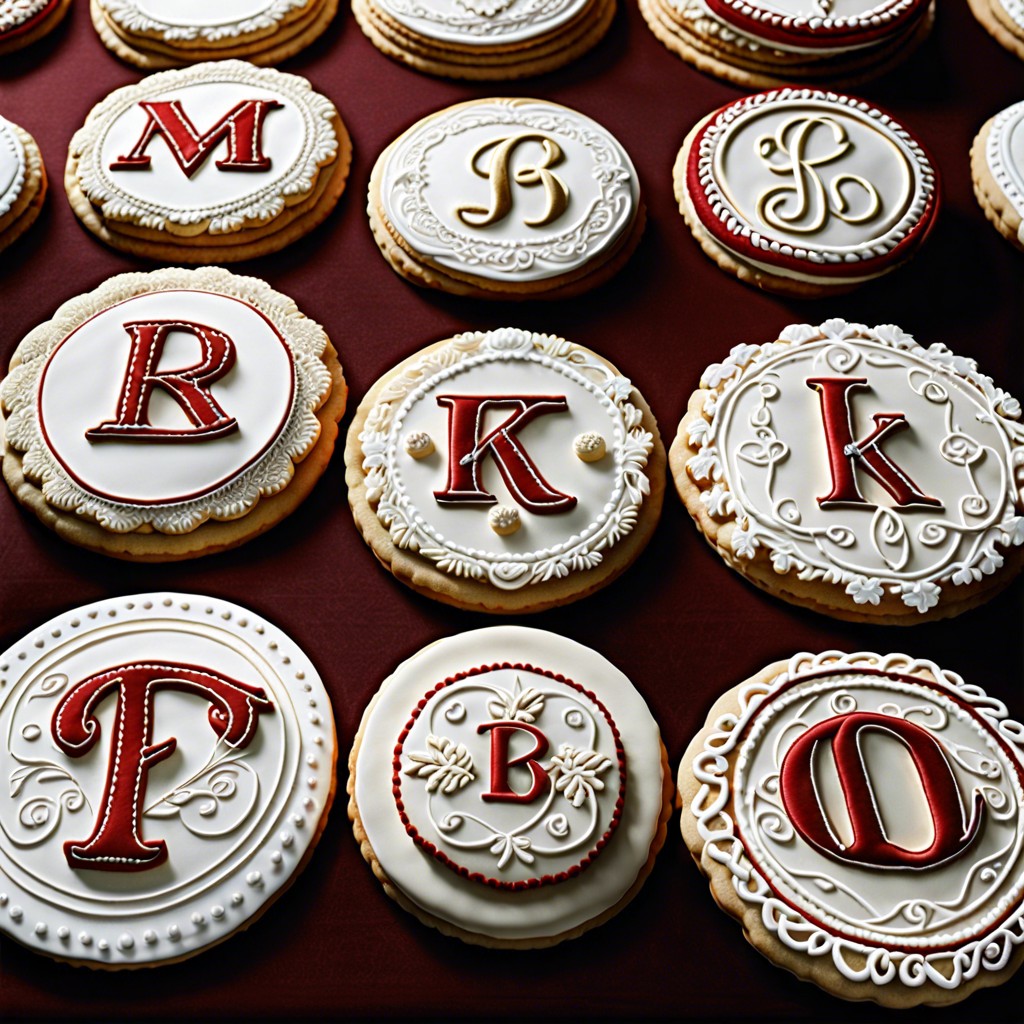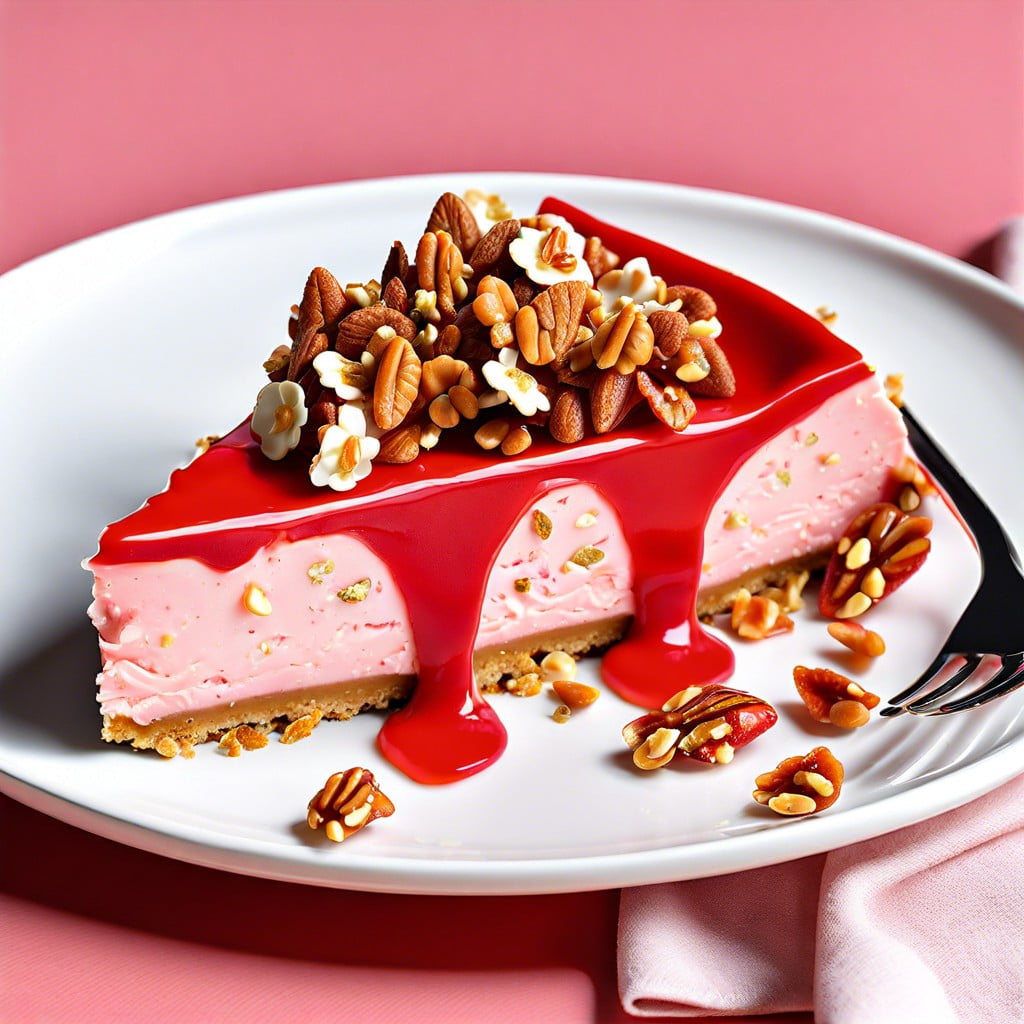Last updated on
Discover the simple steps to secure your pantry door efficiently, ensuring your goods are safe and well-preserved.
Securing your pantry door can be a simple task with the right tools and a bit of know-how. Whether it’s to keep curious kids out of your stash of snacks or to ensure pets can’t get into things they shouldn’t, a lock can be an effective solution.
This article will guide you through the process of choosing the right type of lock, installing it correctly, and ensuring it works seamlessly. So, if you’re ready to add an extra layer of security to your pantry, read on for all the details you need to successfully lock your pantry door.
Key takeaways:
- Key locks: Provide high security with key access.
- Screw locks: Convenient and easily opened or locked.
- Magnet locks: Sleek design with a magnetic system.
- Chain locks: Partially open door before fully unlocking.
- Troubleshooting: Tips for common pantry door lock problems.
Understanding Different Types of Pantry Door Locks
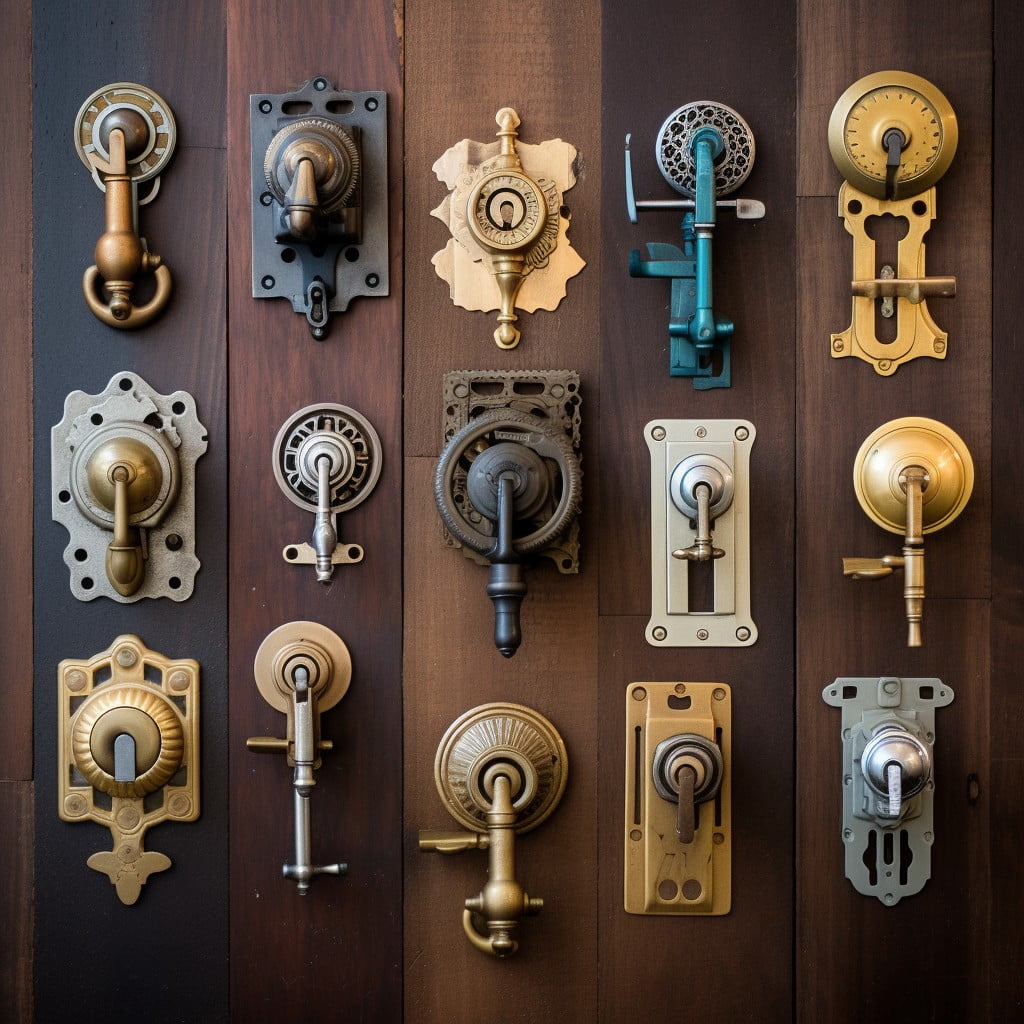
Given their diverse applications, there are a myriad of pantry door locks available on the market.
- Key locks, a conventional choice, require a key for opening and closing, providing a high level of security.
- If convenience is the priority, screw locks, which can be easily opened or locked using a simple mechanism, are a popular choice.
- Magnet locks operate using a magnetic system, a viable choice for those who wish to maintain a sleek design without compromising security.
- Some households opt for chain locks, providing a layer of protection that allows the door to be partially opened before completely unlocking.
Each of these locks has their strengths, and the choice ultimately depends on the specific needs and priorities of the homeowner. Future sections will delve into the details of how to install each type.
Choosing the Right Lock for Your Pantry Door
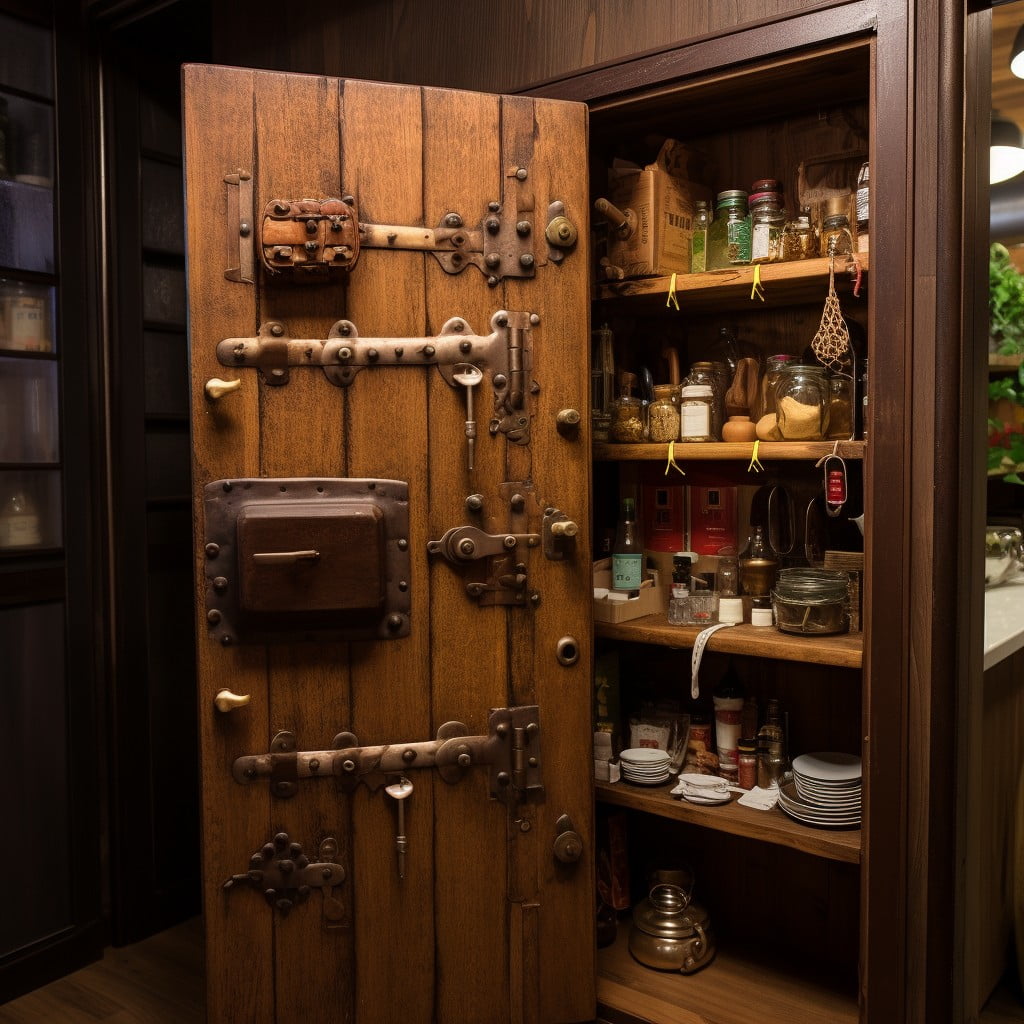
There are several factors to consider when selecting the ideal lock for pantry doors. First, ease of access should be a priority, as frequent use necessitates a lock that can be easily and quickly operated. Next, focus on the risk of spoilage due to humidity and heat – a louvered pantry door may necessitate a more weather-resistant lock.
Lock options:
- Key locks: Versatile, reliable and come in different styles; suited for households where children’s access needs to be limited.
- Screw locks: Budget-friendly, easy to install; ideal for lower traffic pantries or those accessed less frequently.
- Magnet locks: Invisible when the door is closed, offer a contemporary look; great for households preferring tidy aesthetics.
- Chain locks: Works as a secondary security measure; best used in combination with another type of lock.
Remember, the construction of the door itself may influence lock choice, with heavier doors requiring sturdier, more durable locks. Consider trade-offs such as cost versus longevity and ease of use versus security level before making a final decision.
Installing a Key Lock On a Pantry Door
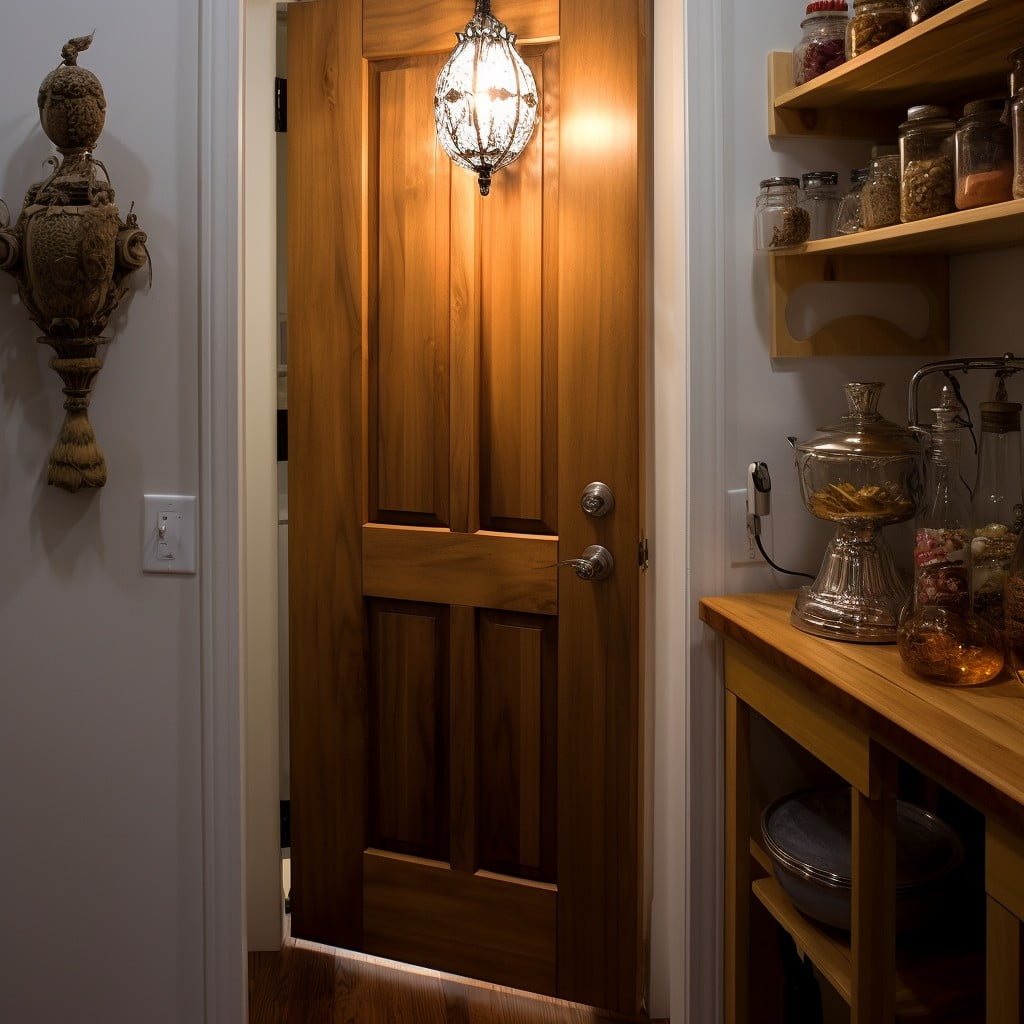
Determining the appropriate position for the lock is the first step. Factor in convenience and safety – it should be high enough to deter children, yet easily accessible for adults.
Purchasing a quality door lock ensures durability and reliability. You’ll need a lock, two keys, and a lock installation kit.
Installation begins by using a hole saw that comes with your kit to drill a hole in the door, where the lock will be installed.
Next, the latch is inserted into the side of the door, aligning with holes drilled previously. Ensure it is flush with the door edge.
Now, the lock is placed through the door, fitting its square peg into the latch hole. Fasten the lock to the door with screws provided in your kit.
The final step is to test the lock with a key to ensure it operates smoothly. Repeat the process until the desired outcome is achieved.
Remember to always keep a spare key in a secure and easy-to-remember location for emergencies.
Implementing Screw Locks On Pantry Doors
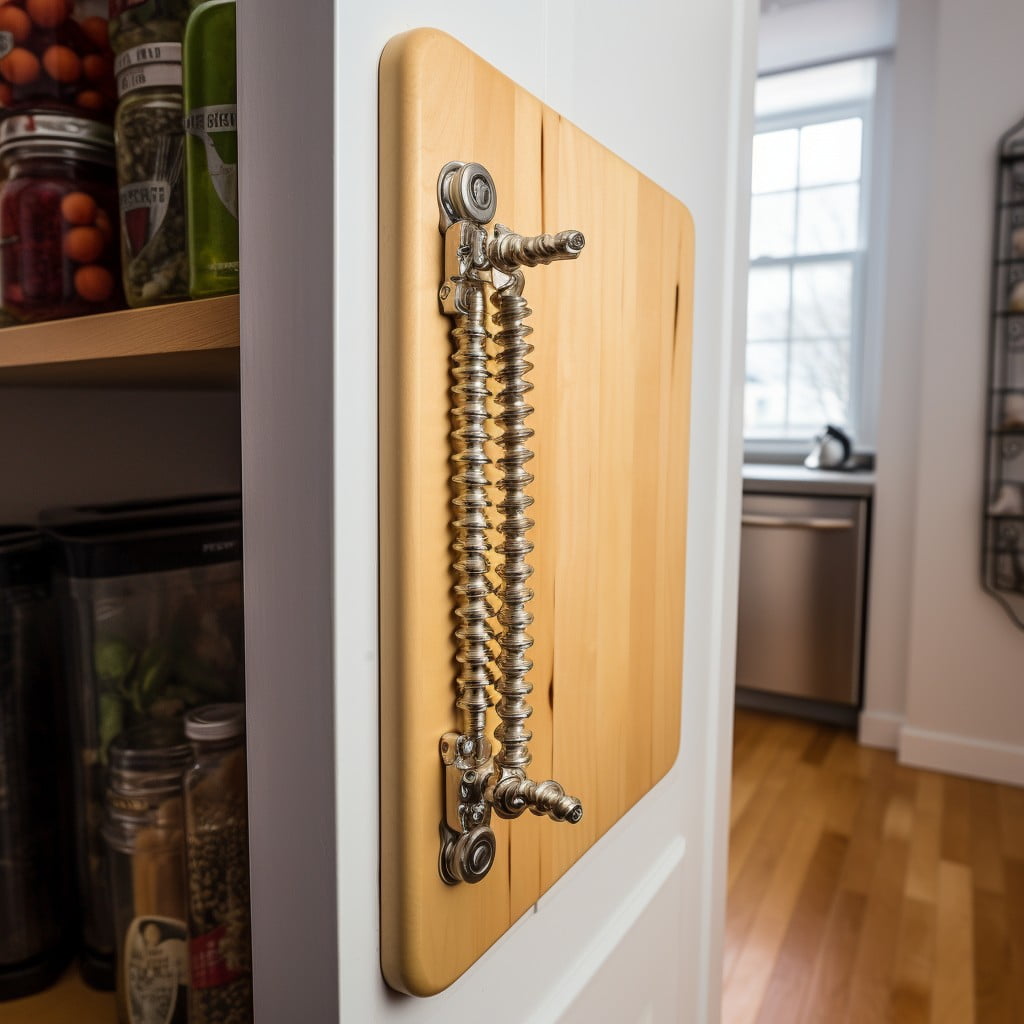
Begin with careful measurement of the door and mark the spots for the lock and its latch. Ensure the lock’s tongue aligns with the latch hole.
- Utilize a drill to make holes for screws, corresponding to the lock’s plate
- Position the lock, ensuring the tongue is facing the correct direction, and fasten with screws
- Align the latch plate with the frame, mark the screw points and secure with screws
- Check to ensure smooth locking and unlocking
Remember, accuracy in positioning the lock and latch is pivotal in the successful implementation of screw locks. Always use suitable screws and maintain a steady hand during the process. Should any problems arise, consult a professional locksmith.
Using Magnet Locks for Securing Pantry Doors
Magnet locks are a popular choice due to their ease of use and sleek, nearly invisible design. Here’s what you need to know:
1. Strong magnets are used to securely shut doors, preventing entry from unauthorised persons.
2. Installation usually involves fixing one piece to the door and another to the door frame. The two pieces attract when the door is closed, holding it securely shut.
3. An external release device typically comes in the form of a magnet key. You slide it outside the door, where the magnetic field penetrates the door to disengage the lock. This is ideal for child-proofing as children often cannot reach or understand the mechanism.
4. Some magnetic locks also come with a switch option, essentially a manual override, useful when you want to leave the pantry door unlocked for a while.
5. It’s essential to check the strength of the magnet. The stronger the magnet, the more secure the pantry door will be.
Advanced Techniques: Installing Chain Locks On Pantry Doors
Chain locks provide an added layer of security, and installation is fairly straightforward with the right tools and steps.
1. Assemble Required Tools: A drill, screws, a screwdriver, a tape measure, and pencil are necessary. The chain lock kit usually includes the actual lock, chain, and screws.
2. Precise Measurements: Measure and mark where both parts of the lock will go on the door and the doorframe. Ensure enough distance for the chain to reach both parts of the lock.
3. Fix the Chain: Start by fastening the chain to the door about 5 inches from the edge. Use the drill to create pilot holes and then attach with screws using the screwdriver.
4. Install the Slide: Next, align the slide lock on the doorframe and repeat the process. Make sure the chain can easily slide into the locking mechanism and out when needed.
5. Test: Finally, try out the new chain lock to ensure smooth functionality.
Remember, while a chain lock is not the strongest option, it does provide an additional barrier, especially if installed correctly and used alongside another type of lock.
Troubleshooting Common Problems With Pantry Door Locks
Misalignment: This often occurs when the latch bolt doesn’t line up with the strike plate. Loosen the strike plate screws and reposition it to correct alignment.
Wear and Tear: Over time, locks may wear down, leading to problems like difficulty in turning or sticking keys. A generous application with graphite powder can solve these issues.
Bent Key or Stiff Lock: Straighten gently a bent key using pliers but avoid exerting too much force. For stiff locks, a dash of lubricant might make the operation smooth again.
Frozen Lock: Sometimes pantry door locks may freeze in harsh winters. Heating the key before inserting it or using de-icing products can help.
Lost Key: Help from locksmiths or lock picking could be the remedy here unless it’s a high-security lock. In such cases, lock changing might be necessary.
Faulty Installation: If the lock was not installed correctly to begin with, it can pose numerous problems. You might need a skilled locksmith or a DIY guide to reinstall it properly.
FAQ
How do you childproof a pantry?
To childproof a pantry, install door lever locks and, to prevent slamming little fingers, use door hinge protectors and foam door stoppers.
How can I block a door from opening?
To block a door from opening, you can stack desks or prop a table against an outward-opening door, or push heavy furniture against it, prop a chair under the handle, or use door jams for an inward-opening door.
What are some effective childproof pantry door lock options available on the market?
Some effective childproof pantry door lock options available on the market include the Door Monkey Door Lock & Pinch Guard, Jool Baby Products Child Safety Sliding Cabinet Locks, and the Safety 1st OutSmart Slide Lock.
In the absence of a traditional lock, how can one secure a pantry door?
One can secure a pantry door by installing a barrel bolt or slide bolt latch, using a magnetic catch, or applying an adhesive child lock.
Can French pantry doors be childproofed effectively; if so, how?
Yes, French pantry doors can be childproofed effectively by installing top and bottom slide bolts or child safety lever door handles.
Recap:

